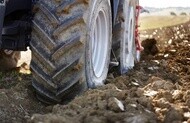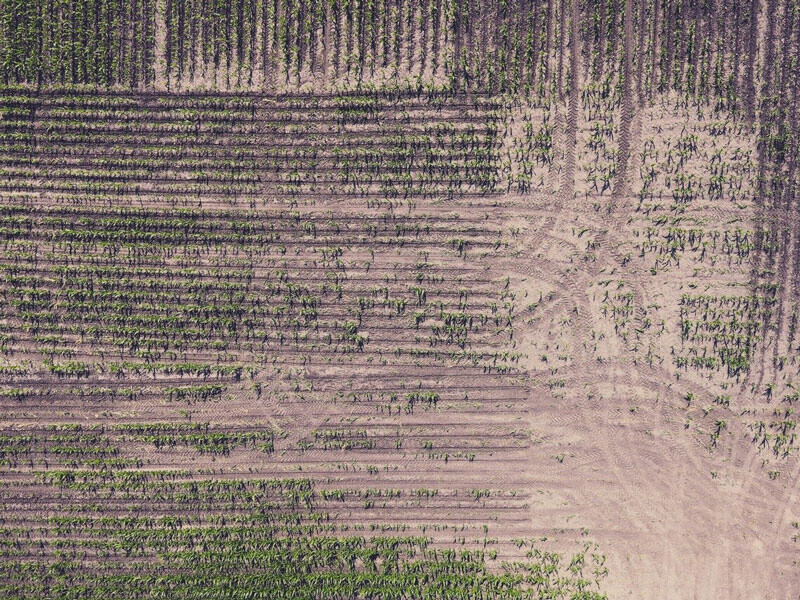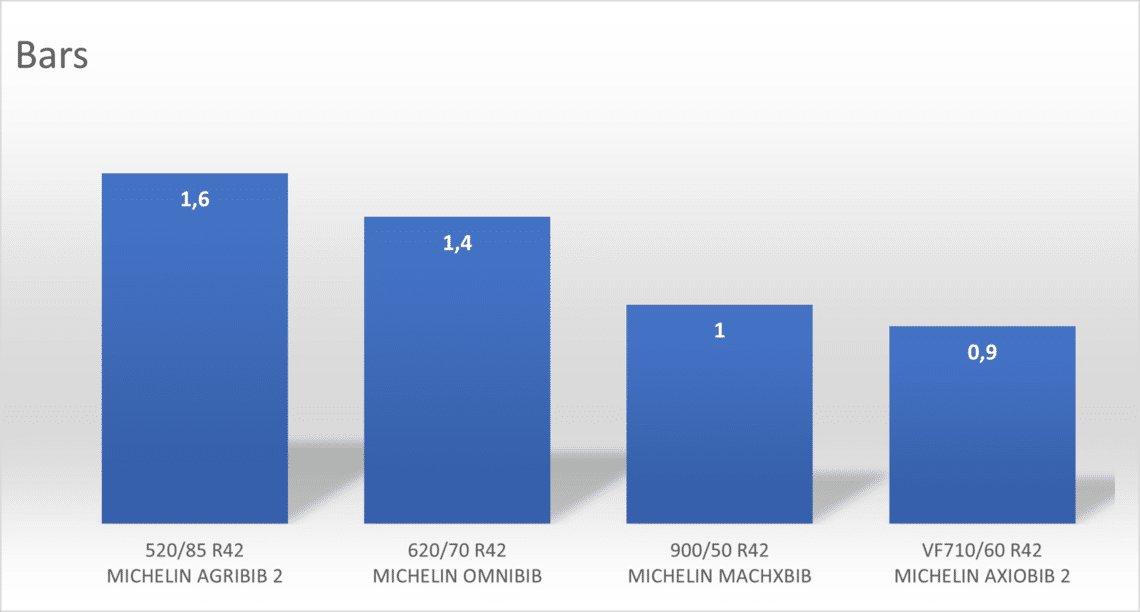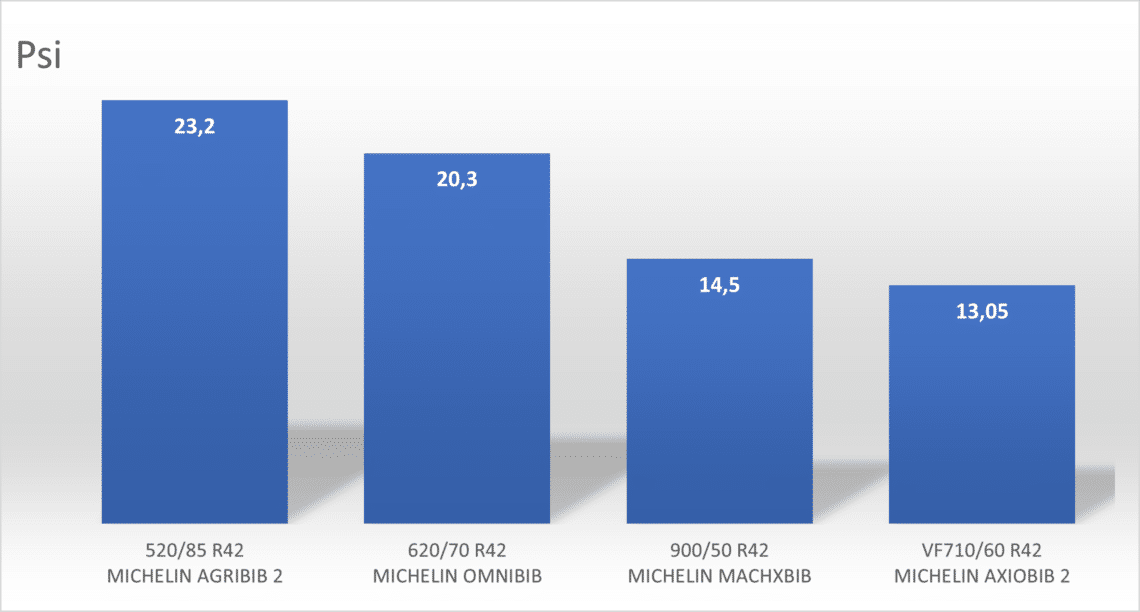
How to reduce soil compaction
sculpture pneu MICHELIN AXIOBIB2
How to reduce soil compaction and improve your crop yield?
What is soil compaction?
Soil compaction is one of the principal soil damage processes: it is caused when increasingly heavy agricultural machinery travels over the soil, often in difficult weather conditions.
Compaction is linked to the very nature of the soil, its water content, crop types and the load applied to the surface. Repeated passes by agricultural equipment create soil compaction and shear, thereby reducing capacity for aeration, infiltration, and crop root penetration.
The economic impact of soil compaction is significant: reduced crop yield, the risk of disease development, and a need to do remediation work such as ploughing and/or sub-soiling which eat up considerable fuel and time. Moreover, it increases the risk of disease development.

Soil compaction is one of the principal soil damage processes
soil with tire tracks
But soil compaction is not the only phenomenon that can cause problems for your crops.
Rut formation

A rut is a longways indentation in the soil
picture of a rut in a field
A rut is a channel in the soil that is caused when farm machinery drives over it. Rut formation is a major issue on soils with a high moisture content.
Rut formation has catastrophic consequences for crop growth: nothing grows in a rut, so it represents a net loss of yield.
Ruts encourage water stagnation, which can suffocate plants and promote the development of disease.
Ruts also cause farm machines to consume more energy. The depth of a rut is similar to a "slope" that an agricultural tyre has to climb constantly. That means increased fuel consumption. The field damage caused by substantial rut formation will need to be repaired. This means carrying out soil regeneration work, which uses up time and fuel.
What can be done to reduce soil compaction and rut formation?
We recommend using agricultural tyres capable of reducing ground pressure while carrying heavy loads. The pressure in the tyre is close to the average pressure applied to the soil. (E.g. if the pressure in the tyre is 1 bar (14.5 psi), the pressure applied to the soil by the tyre will be around 1 lb/sq.in or 1 kg/cm2.) So the higher the tyre pressure, the higher the pressure applied to the soil and the higher the degree of compaction and rut formation. Soil compaction is made worse when agricultural tyres slip – to avoid this it is essential they have good traction!
Here are two solutions for reducing soil compaction and rut formation.
Solution #1: Opt for wide, "large volume" tyres
The purpose of wide and large volume tyres is to reduce pressure at the same load and provide a better level of traction, while retaining the same external diameter and rolling circumference as a "standard" tyre.
A tractor originally fitted with standard tyres can be fitted with wide or large volume tyres. The footprint is therefore larger, limiting soil compaction and rut depth.

Wide or large volume tyres reduce pressure and provide better traction
The chart below compares the pressure required for different tyres to carry the same 4500kg load in the field. The wider your tyre, the lower the pressure.*
This advantage is accentuated when the tyre features MICHELIN Ultraflex technology.

Tyre pressure comparison chart in bar

Tyre pressure comparison chart in psi
Solution #2: Opt for Michelin UltraFlex Technologies
MICHELIN UltraFlex technology is based on an innovative, particularly tough casing, which enables more flex.
As a result, MICHELIN UltraFlex tyres can carry heavy loads even at very low pressures, however fast you work.
And that's not all: the flexible construction of the casing allows for a larger footprint, which in turn increases the tyre's traction and therefore limits soil compaction. With improved traction, MICHELIN UltraFlex technology tyres also allow you to save fuel and to work faster, which improves your crop yields. Studies carried out over several years by renowned universities* (in England, the USA and Brazil) have concluded that MICHELIN UltraFlex technology can increase agricultural yields from 2 to 6%.**
In short, with MICHELIN UltraFlex technology:
- you protect your soil
- you save time and fuel
- you increase your crop yields.
How does MICHELIN UltraFlex technology work? Watch the video to find out:
To watch this video, you'll have to accept some cookies from Youtube platform. Just click on the button below to open the cookie module.
Accept youtube cookiesConclusion
Whether you choose wider tyres or tyres with MICHELIN UltraFlex technology, you'll reduce soil compaction significantly.** But soil preservation is not the only benefit of optimised agricultural tyres:
- Less soil compaction reduces the need to regenerate the ground and therefore implies cost savings,
- Improved traction means less effort and energy from your machine, and therefore fuel economy.
- Better traction also means you can get the job done more quickly, so you can produce more to maximise your yield or simply free up more time to spend with your family.
STAY TUNED
TO THE LATEST NEWS FROM MICHELIN AGRICULTURE!
By providing your email address and clicking on "Send", you agree to receive news and information from Michelin.
You can unsubscribe at any time.
For information on how we process your personal data including on data security, data retention and lawful processing bases, please see our Privacy Policy.
Fields marked with an asterisk (*) are mandatory.
Without these details, we cannot process your request.
We are delighted to have you among us.
Other articles to find out more:
* Based on tyre pressure tab recommandation of the MICHELIN databook 2022.
**A study carried out by Harper Adams University in the UK from 2013 to 2017, demonstrates that MICHELIN ULTRAFLEX technology increases agronomic yields from 2 to 6%. These results are confirmed by similar studies carried out in the United States (Illinois) in 2015 and Brazil (Mato Grosso) from 2018 to 2021
Need more advice? Discover our tyre choosing guide.




